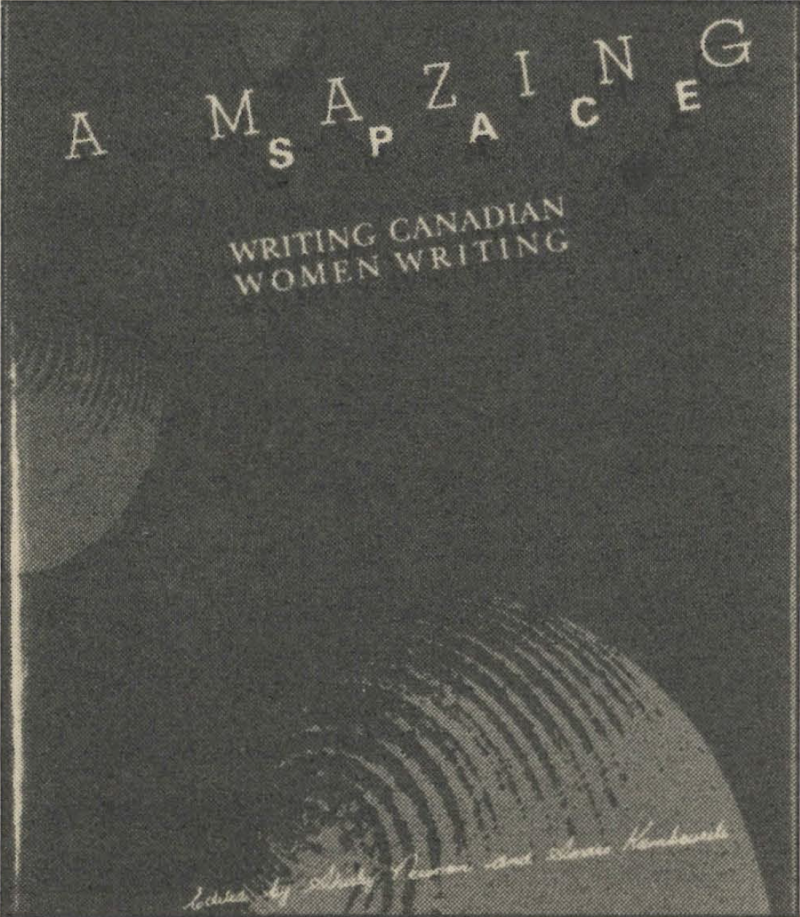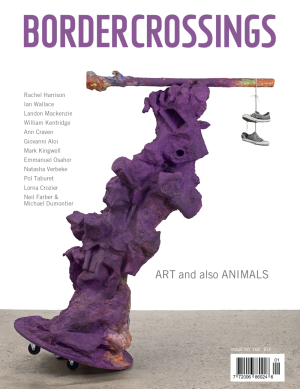A Mazing Space
Even the appearance of this book signifies opening. A Mazing Space is designed as a large-format book containing 38 essays spread out in a spiral over 400 pages. With translations, notes and comments printed in wide, side margins, the essays are open to dialogue beyond their own borders. The book opens a re-reading and rewriting of the Canadian literary tradition.

The result is not a new canon, but the contributors to this volume bring differences—of language, nationality, colour, gender, genre—to a re-vision which leaves behind (exceeds) the model of the same. These essays open to what Sarah Harasym calls a “plural space” beyond the polarities of the binary code.
Helene Cixous has written that the binary model is “everywhere (where) ordering intervenes” in western thought systems. The essays in A Mazing Space deconstruct this binary model by marking out its pervasiveness in our literary tradition, its capriciousness and its inevitable violence. (As Cixous says, “There has to be some ‘other’—no master without a slave, no economico-political power without exploitation, no dominant class without cattle under the yoke ….”)
Everywhere these writers look, they find the same model: subject/object; male/female; mind/body; man/nature; white/coloured; centre/margin; civilization/savage. “The patriarchal symbolic” as Louky Bersianik calls it: “… Manichean bi-polarity, binarity and principles of exclusion, of contradiction, of identity … crucible in which the masculine was first opposed to the feminine … principle which is guiding society and scotomizing the most critical brains.” [“Scotomization” comes from a Greek word meaning darkness; it is a psycho-analytic term which refers to an unconscious process of dividing, censoring and excluding.] Woman have been “scotomized” too, sometimes reproducing the sort of blatant ethnocentricity Marni Stanley finds in the travel accounts of 19th- and 20th-century Canadian women who disparage “those miserable dirty Indians.”
Most often, however, woman has been on the other side of the line: at once displaced and divided within and against her self. Kristjana Gunnars writes of Laura Goodman Salverson’s experience as a Canadian writer belonging to an ‘ethnic group’ that it is twice divided: once by the us/them of ethnicity, then again by the male/female dichotomy. Double displacement. As in Lola Lemire Tostevin’s Colour of Her Speech, where, as Shirley Neuman points out, “[t]he undoing of the French subject by the dominant English language functions as ready allegory for the undoing of women as subject in discourse.” Claire Harris reminds us of the subtlety with which the binary model continues to establish sub-text when the work of black writers is reviewed: “… first, white/black; then, cerebral/physical; middle class/lower class; standard English/idiom.” It all remains “part of the received wisdom of the society,” Harris observes wryly, “its common sense.”
These essays venture beyond the confines of common sense. They step outside the limits of the literary, re-reading tradition through “marginal” forms: diaries, letters, autobiographies, travel writing, performance poetry, oral texts. They open the canon to often-forgotten women writers: Marjorie Pickthall, Anne Wilkinson, Anna Jameson, Lily Dougall, Laura Goodman Salverson. And it is on the margins that the essayists find differences. In the autobiographies of “lesser known settler women,” for example, Helen Buss finds “the more interestingly stylistic features.” In Anna Jameson’s writing Bina Friewals discovers a “blasphemous defiance” of the hegemonic binary code. In Lily Dougall’s novels (“who is Lily Dougall?”), Lorraine McMullen finds “startlingly original” plots, “often daring” for their time, ones which “challenge current moral and ethical assumption.” Even when these essayists read the current centre—Margaret Atwood, Margaret Laurence—they do so by way of introducing differences, expanding the field.
By means of this expansive writing, A Mazing Space struggles for and towards the plurality of an open text. Language is central to this struggle. These writers are looking for language which opens, rather than simply reverses, the binary model. As Louky Bersianik argues, deconstruction of the symbolic system of language cannot be accomplished by that critical strategy which encourages women “… to leap over the symbolic frontier on the Pythagorean axis and find ourselves on the male side of the symbolized things which is the ‘good side,’ the side of rectitude, of rightfulness, of the straight line, of the vector of light, of the Phallus!” Or, as Donna Bennett puts it in “Naming the Way Home”: “As long as we choose to view ourselves as one part of a binary pair, as long as we identify ourselves as an opposite, we will never know who and what women are, we will never find our names.”
A Mazing Space names by undefining. The language which opens, (re)writes the feminine body. In the plural. As the source/site of differences. In this language, woman is not either subject or object. “This language must not be understood as a form of discourse that unifies feminine utterance,” Smaro Kamboureli writes, “but as a language of polyvalence. The linguistic subjectivity of the woman writer, because it challenges sexual monism and disperses the mystery of the silence assigned to her, is a dissemination of differences.”
In different ways, the essays in A Mazing Space struggle to “write womanly,” to bring woman and language together in a way which performs as open text, and in a way that writes a plural world. ♦
Dawne McCance teaches in St. John’s College at the University of Manitoba. This is her first contribution to Border Crossings.

